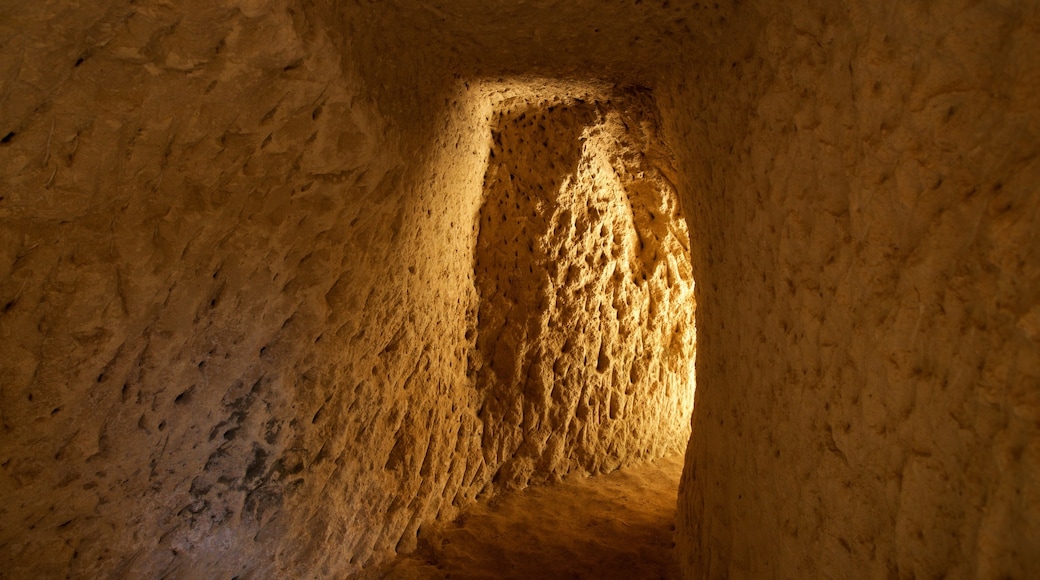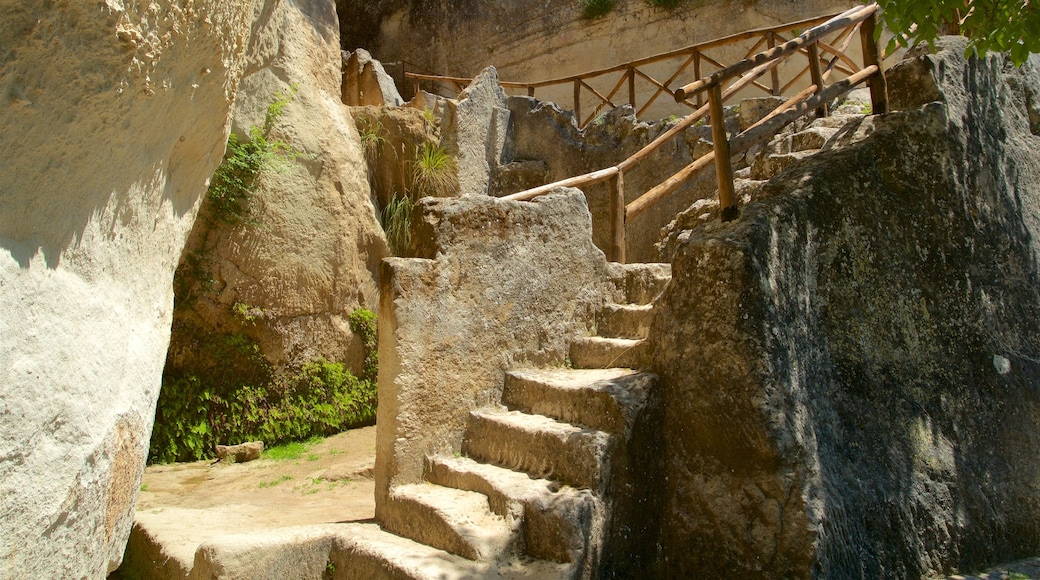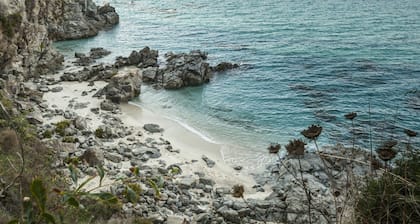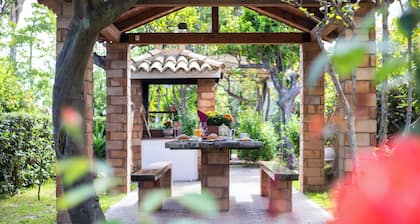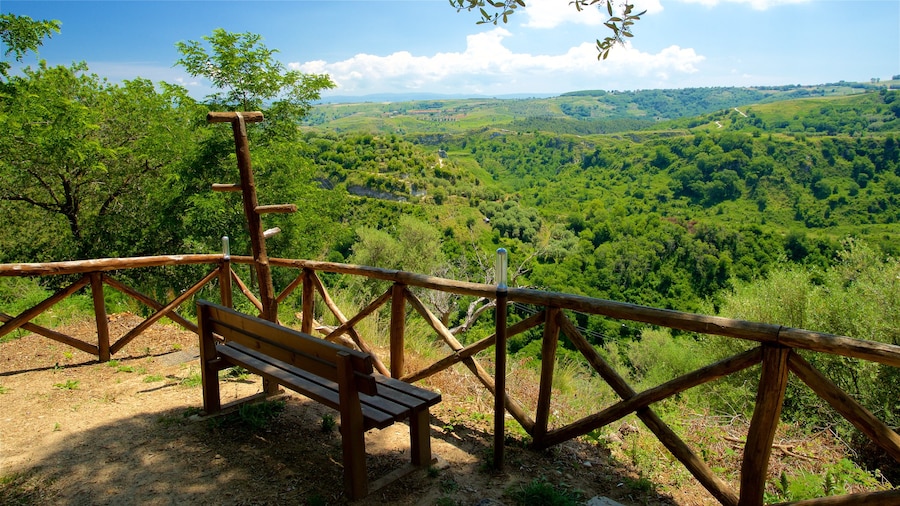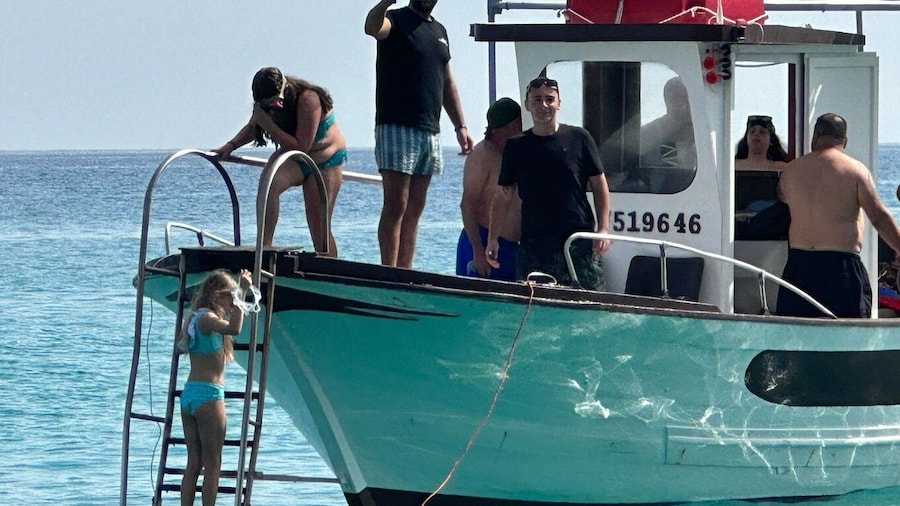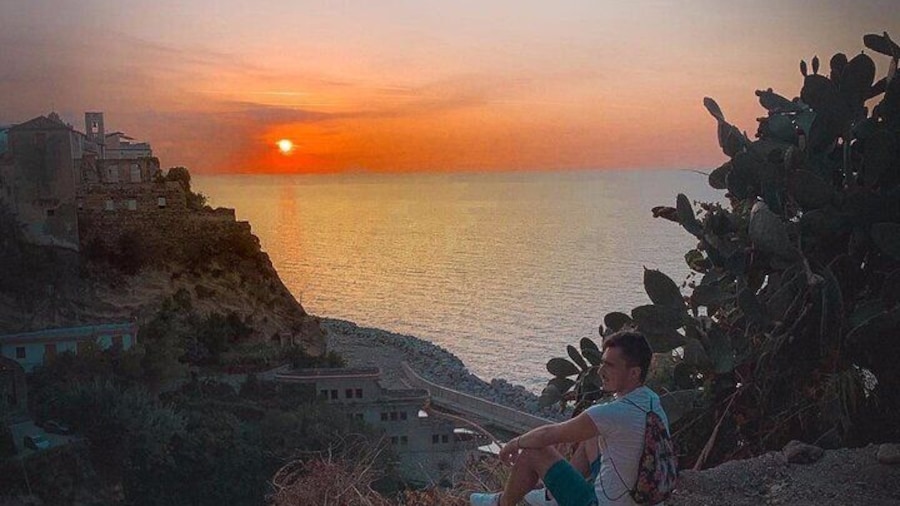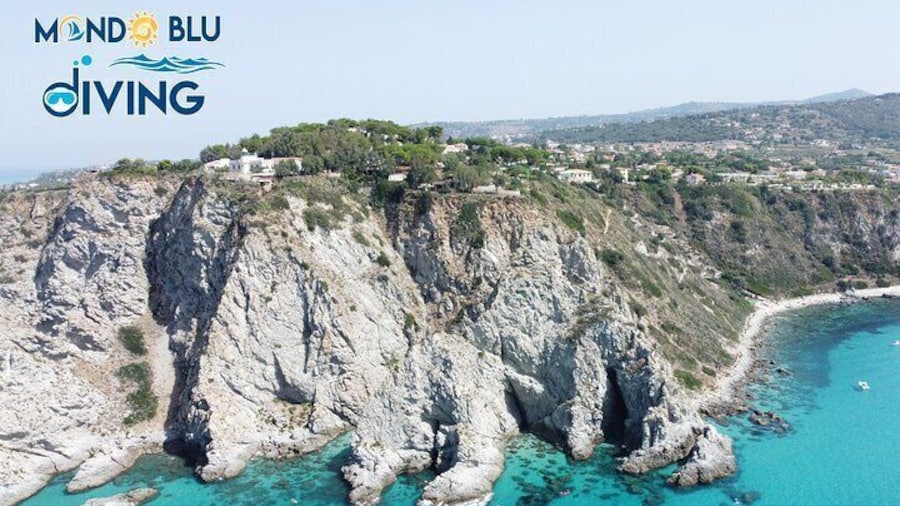Zungri is an otherworldly hilltop village known for its pockmarked sandstone cliffs. The grottoes and crevasses in the rock formations, which were used for hermitages and monasteries, create a varied and intriguing landscape. Learn about the Basilian monks who dwelled in these caves.
The hills of the village are adorned with hundreds of grottoes, varying in size and appearance. Visit the Insediamento Rupestre Degli Sbariati for a museum on the most intricate of these rock cavities. The site stands in the southeastern outskirts of the town.
Clamber into the cave dwellings for a sense of the conditions in which these monks lived between the 12th and 14th centuries. Make your way up and down the carved steps and through the spacious rooms of the caves. Walk along carved paths that link the many caves, which are sheltered by trees and other limestone rocks. Warm, dry summers provide perfect conditions for hiking around these spectacular surroundings. July is the driest month, while winters are mild and a little wetter.
Spend time in the nearby abandoned village of Papaglionti. This centuries-old hamlet formerly prospered as a large producer of wheat and olives, before several large earthquakes led to its desertion. Snap photos of the derelict buildings that are gradually falling apart.
Arrive in Zungri for the festival L’Infiorata on the ninth Sunday after Easter. Inspect the array of colorful carpets, pictures made from flowers and other works that decorate the streets. Appreciate the sights, sounds and scents, as you chat with friendly locals.
The village is located in the heart of the Vibo Valentia province in Calabria of southern Italy. It is near the coastal towns of Tropea and Capo Vaticano. Fly to Lamezia Terme International Airport and drive south for 35 miles (56 kilometers) to get here in about 1 hour. Travel between some of the nearby coastal towns via the railway links.
Zungri is an exceptional gem, with its cratered limestone rocks and fascinating history.


